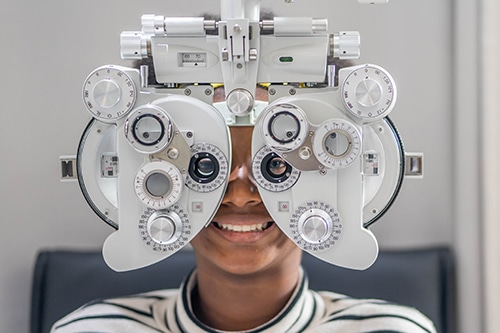Your Vision Prescription


The degree of refractive disorder, or how much correction is needed, due to any of these conditions, is measured in something called “diopters”. The greater the degree of correction needed the higher the number of diopters. A negative diopter number indicates nearsightedness. A positive diopter number indicates farsightedness. Diopters are also used as a measure of astigmatism and presbyopia.
For nearsightedness the scale of diopters is given in increments of three and ranges from mild (less than –3.00 diopters) to moderate (–3.00 to –6.00 diopters) to severe (–6.00 to –9.00 diopters) To extreme (more than –9.00 diopters). For farsightedness the scale is given in increments of two ranging on a similar scale from mild (less than +2.00 diopters) to extreme (more than +6.00 diopters). Astigmatism is also measured from mild to extreme in increments of one. Mild astigmatism is considered to be less than 1.00 diopter while extreme astigmatism is anything greater than 3.00 diopters.
Corrective lenses, such as glasses or contacts, are one way to deal with these common vision problems. But today, thanks to advances in technology, various surgical techniques, such as LASIK, are available to permanently improve or correct most of these conditions.
